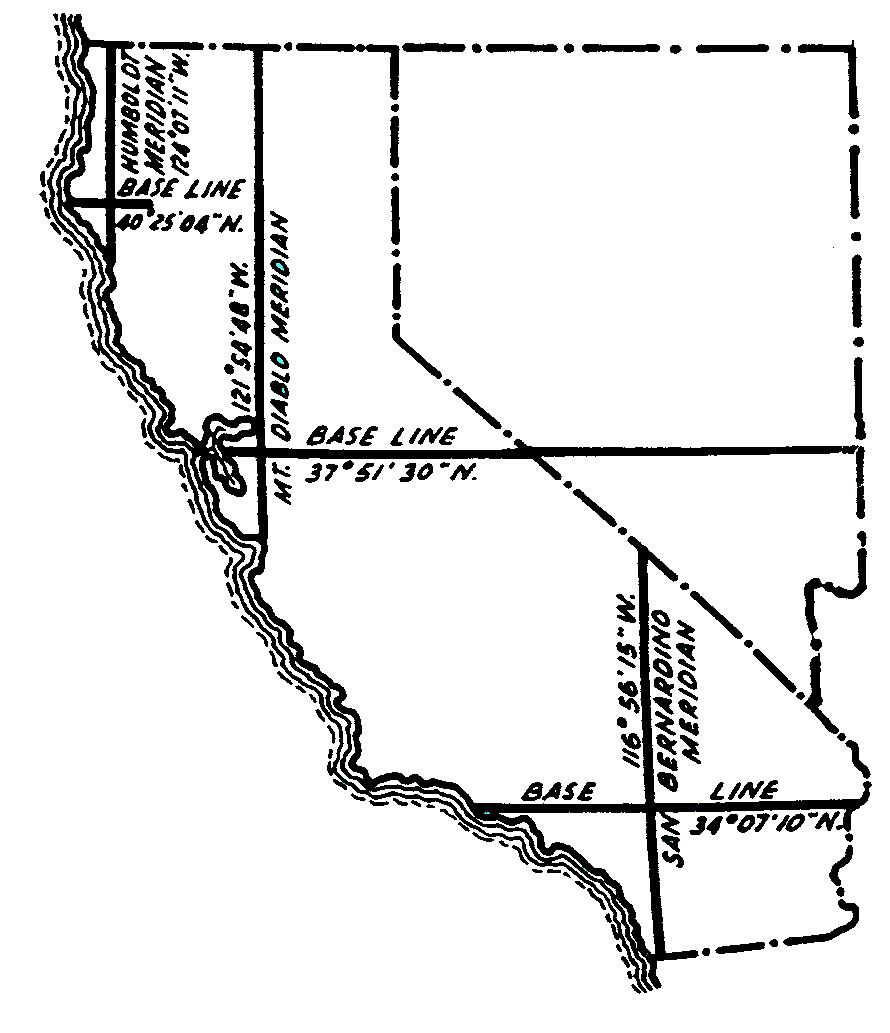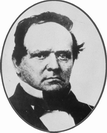The Mt. Diablo Initial Point,
Its History and Use
MOUNT DIABLO SURVEY POINT ESTABLISHES PROPERTY
BOUNDARIES IN CALIFORNIA AND NEVADA
By John W. Pettley, PLS
Ever wonder how your property corners were initially established? Just look to the top of Mount Diablo for the answer.
Mount Diablo is the starting point for the establishment of land boundaries throughout most of Northern California and all of Nevada. The summit is the location of the "Initial Point," the north/south meridian, and east/west baseline intersection point that is the basis for most property boundaries.
As part of the settlement of the Mexican War of 1846-1848, "ranchos," or private land holdings established during Spanish and Mexican rule, were honored by the U.S. Government under the Treaty of Guadelupe Hidalgo with Mexico.
These ranchos, which were primarily along coastal areas of present-day California and in the San Joaquin and Sacramento Valleys, covered 9 million acres, or 14,000 square miles. To delineate these private lands, the United States Deputy Surveyors were assigned to survey the rancho boundaries. During the 1850s more than 30 government survey parties were deployed.
While the rancho boundaries were being surveyed, plans were underway to begin subdividing federal land in the territory in accordance with the United States Public Land Survey System (USPLSS). The procedure for land surveys under the USPLSS was to establish a starting point, called an "initial point," which becomes the intersection of true east/west, and north/south direction lines.
The original plan for California was to establish one initial point. But surveying the public lands in California was no easy task. Because of the size of the state and the steepness of terrain in many areas of California, the Surveyor General of the United States decided that three initial points were needed.
 These points were established on Mt. Diablo in Contra Costa County in 1851, on San Bernardino Mountain in San Bernardino County in 1852, and on Mt. Pierce in Humboldt County in 1853.
These points were established on Mt. Diablo in Contra Costa County in 1851, on San Bernardino Mountain in San Bernardino County in 1852, and on Mt. Pierce in Humboldt County in 1853.Once these grid lines were established, public lands were divided into six mile-square townships, and then further subdivided into one mile-square sections. These one-mile square sections are easily recognizable in rural areas of California, often being delineated by country roads and fence lines.
Because of its prominence on the Northern California landscape, Mount Diablo has also been used for important survey monuments by other government agencies including the Department of the Navy, the California Department of Natural Resources, and the United States Coast and Geodetic Survey.
In 1928, the Standard Oil Company of California built an aircraft landmark beacon near the summit of Mount Diablo. The beacon was a navigational aide for the oil company's ships plying the San Francisco Bay waterways. The lamp from that beacon still sits at the top of the rotunda of the Summit Museum, and is lit each year to commemorate Pearl Harbor Day.
In July 1851, Col. Leander Ransom,
 General Land Office Deputy Surveyor, was under instructions from the Surveyor General for California to establish the initial point on Mount
General Land Office Deputy Surveyor, was under instructions from the Surveyor General for California to establish the initial point on MountRansom then went due south 12 miles and set additional monuments to establish the meridian line. He continued setting monuments due east, due north, and due west of the initial point on the summit of the mountain, thereby establishing the Mount Diablo Base and Meridian lines. Ransom began on July 17, 1851, and completed his survey on August 31, 1851.
One year later, in 1852, R. D. Cutts of the United States Coast and Geodetic Survey traveled to the top of Mount Diablo on a mission to establish a survey marker for mapping surrounding waterways and topography. After finding Ransom's initial point set a year earlier, Cutts established his monument 3 feet to the southwest, on a flat ledge that was more suitable for setting up a tripod and survey instrument. He noted the relationship of the two points in his official notes, and included a sketch showing their relationship to each other. The point established by Cutts is now marked by a copper pin at the base of the concrete pillar, in the basement of the summit tower.
In July of 1993, land surveyors from around California gathered on top of Mt. Diablo to celebrate the installation of a new plaque commemorating the survey makers on the summit of Mount Diablo. The new plaque was placed on a concrete pillar inside the basement of the summit tower, and became a part of the newly renovated Summit Museum and Visitor Center opened by the California State Park Service in October, 1993.
In July 2001, land surveyors from around California and Nevada will again gather on the summit of Mount Diablo, this time to celebrate the 150th Anniversary of the setting of the Initial Point by Ransom. The Mount Diablo Surveyors Historical Society, in cooperation with the California State Park Service, will host a commemorative celebration for the general public. There will be numerous booths and displays, including antique surveying instruments used by land surveyors of Ransom's time, and many other educational activities.
IRS 501(c)3 (Federal #8916806802, CA 1835904).
Website designed and maintained by Jennifer Pettley.
Page last updated 2-21-2011
Copyright © 2000 MDSHS.